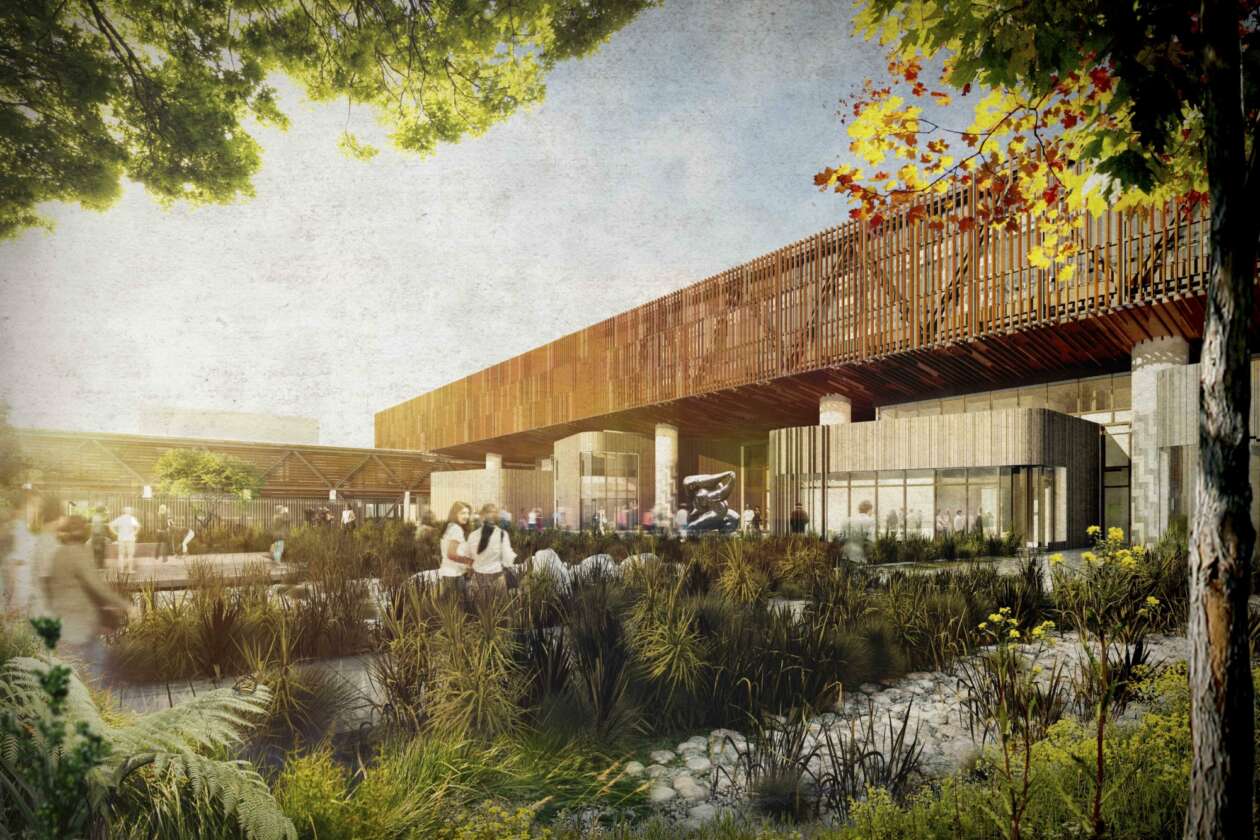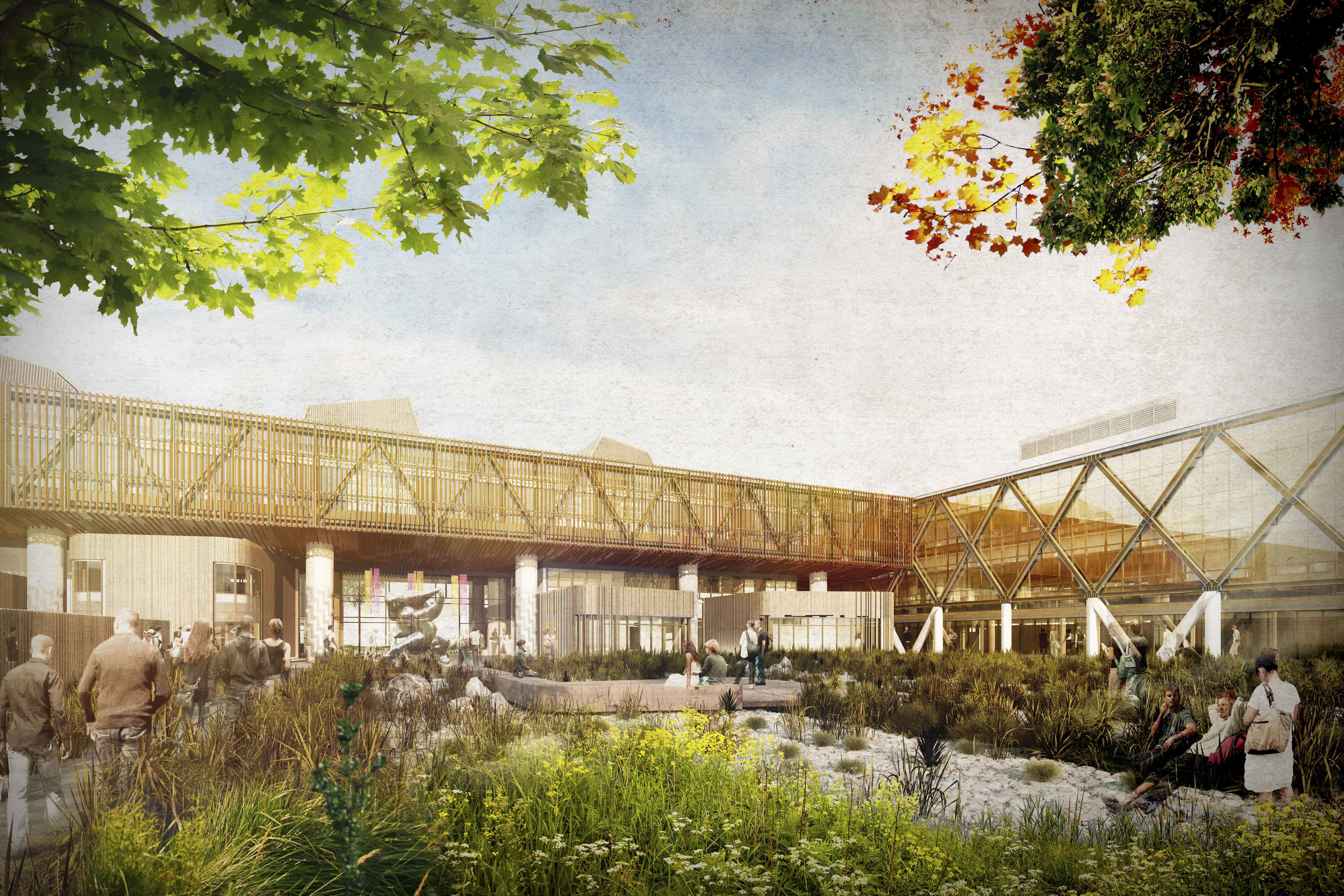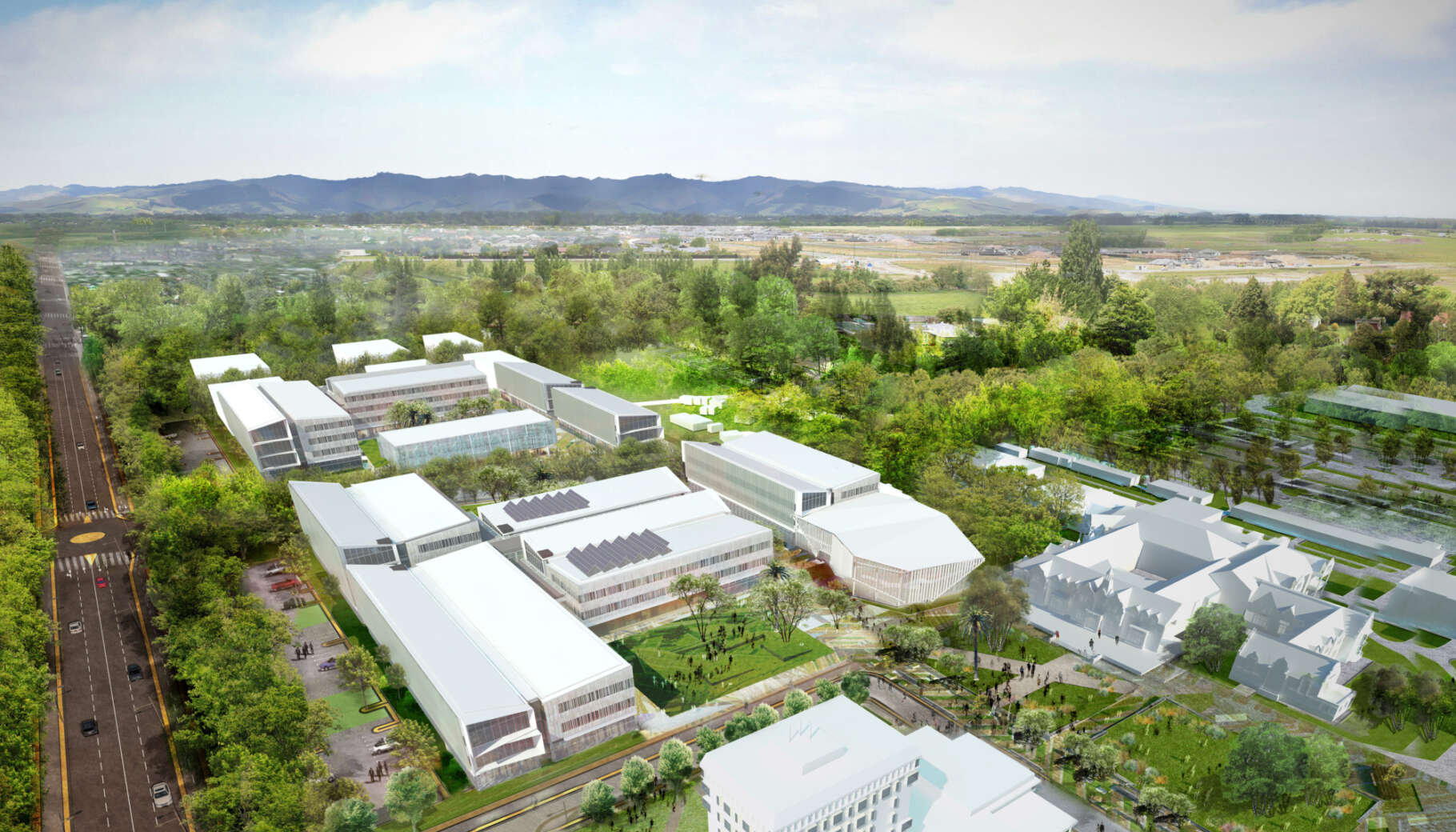Lincoln University AgResearch Joint Facility
The Lincoln University AgResearch Joint Facility, winner of the Education - Future Project category at the 2018 World Architecture Festival, is a collaboration between Lincoln University and AgResearch.
Scheduled for completion in 2020, it will also provide accommodation for South Island DairyNZ staff, as a tenant of AgResearch. The Joint Facility is part of the Lincoln Hub concept which has been developed by five founding partners, AgResearch, Landcare Research, Plant & Food Research, Lincoln University and DairyNZ. It is envisaged that The Lincoln Hub will evolve to include a broad range of industry and research organisations with a commitment to land-based productivity and sustainability.
The Lincoln University AgResearch Joint Facility will focus on some of the most significant opportunities – and challenges – facing New Zealand’s primary industries. The overarching goal of Joint Facility is to accelerate the rate of economic development of the land-based sectors while improving their environmental performance. In doing so, the facility will become a world-class centre for education, research, technology transfer and adoption, and practice change. By supporting industry innovation, the Joint Facility will help build the capability needed for the primary sectors to achieve their potential for New Zealand.
A fully developed Lincoln Hub will be a thriving centre for academic, research, industry good and private sector business organisations to work collaboratively both with each other, and with other New Zealand stakeholders. To achieve this, the Joint Facility will be fully integrated into the strategies of the primary industries,and stimulate innovation and entrepreneurial endeavour by the private sector. It will also draw on and connect with other successful Hubs from across the country.
Warren and Mahoney, in association with Woods Bagot, Boffa Miskell and LabWorks, undertook a two-year consultation process to discover the Facility’s shared goal: breaking barriers to progress. Incorporating the viewpoints of iwi, farmers and a wide range of agricultural stakeholders, our teams devised a single, unified masterplan which would remove obstacles in the industry, allowing collaboration, world-class research and a shared identity to take their place.
Our designed 27,000sqm research laboratory, corporate office and tertiary education nucleus breaks barriers to communication, by organising staff into the sciences they study, not the organisations they work for.
The Lincoln University AgResearch Joint Facility will deliver increased capability through a combination of new investment into Lincoln (initially by AgResearch Lincoln University) and by employing collaborative approaches to make better use of existing intellectual and physical resources. This will lead to more quality science outputs, and faster speed to market through more efficient research and knowledge transfer.
Warren and Mahoney Managing Director John Coop said the firm’s recognition in this year’s World Architecture Festival awards demonstrates its commitment to reflecting an understanding of identity, place and community in the design process.
"This project is emblematic of Warren and Mahoney’s approach to our work with clients and their stakeholders. Our process is grounded in driving conversation before design, sharing our ideas with authentic generosity and ultimately creating spaces that belong to people. We’re honoured to see the end results receiving international recognition among this year’s competitive and highly qualified field.”


